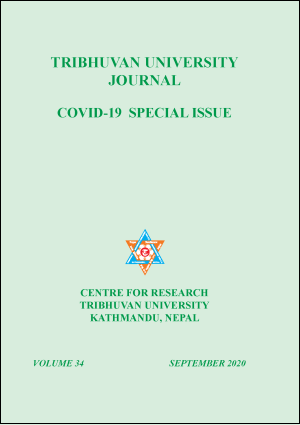Visibility of Invisible: Covid-19 and Nepal-India Migration
DOI:
https://doi.org/10.3126/tuj.v34i0.31542Keywords:
COVID-19, migration, livelihoods, social securityAbstract
India remains the preferred destination for Nepali migrant workers. There is a freedom of movement and work to citizens of both the countries without the need of passport or visa requirements. This paper studies the impact of COVID-19 on Nepali migrants in India by employing a mixed method research approach. The imposition of nationwide lockdowns in both India and Nepal has resulted in multiple forms of impacts on migrants, revealing a complicated cross-border dynamics. Sudden enforcement of restrictive measures including lockdowns, while necessary, adversely triggered vulnerabilities and precarity onto millions of Nepali migrants in India. The lack of political and legal recognition and inadequate state policies towards social protections worsened the magnitude and severity. While immediate relief measures and safe return is necessary in the short term, it suggests revising their foreign policy, development and social security policies to address the adverse drivers that Nepali migrants have faced.
Downloads
Downloads
Published
How to Cite
Issue
Section
License
This license enables reusers to distribute, remix, adapt, and build upon the material in any medium or format for noncommercial purposes only, and only so long as attribution is given to the creator.
© Center for Research, Tribhuvan University

